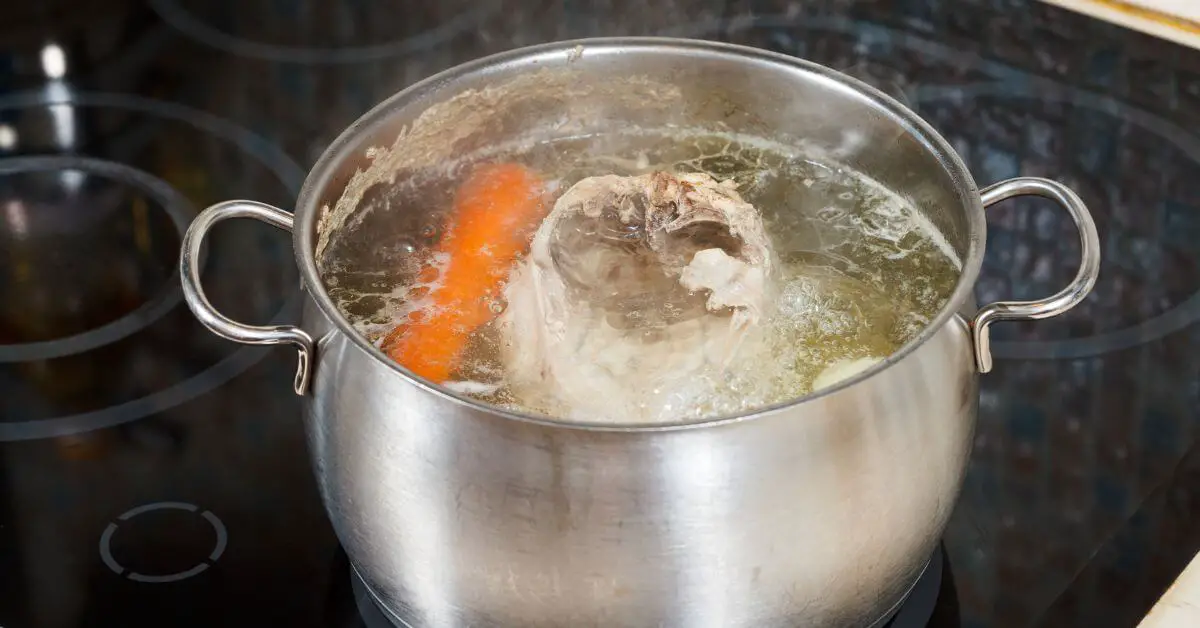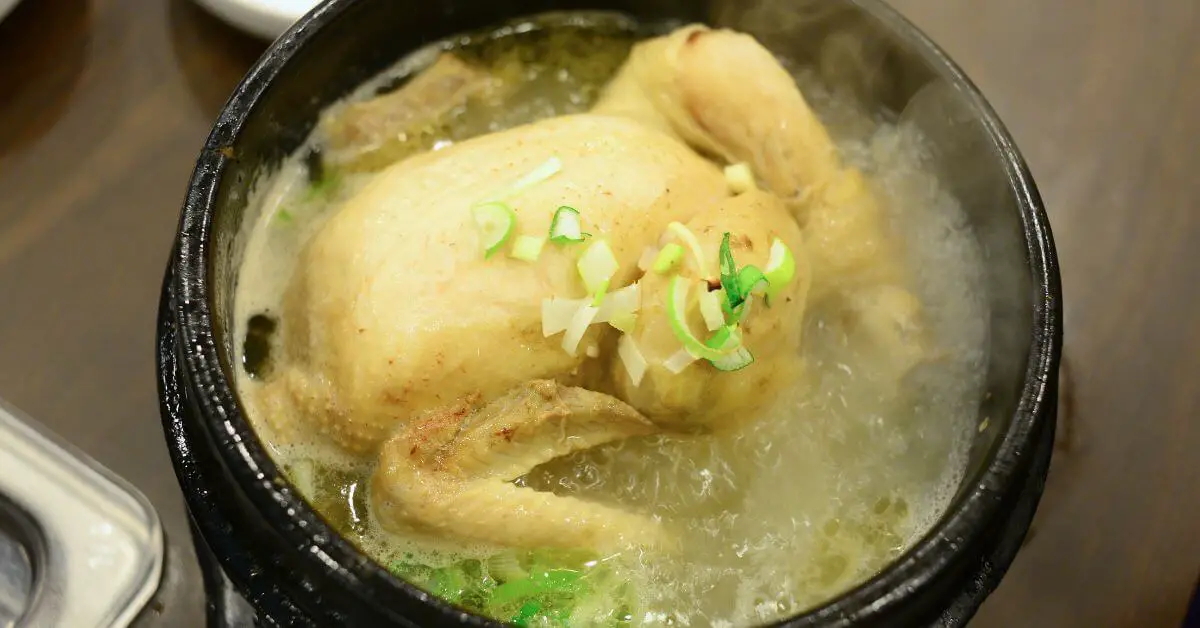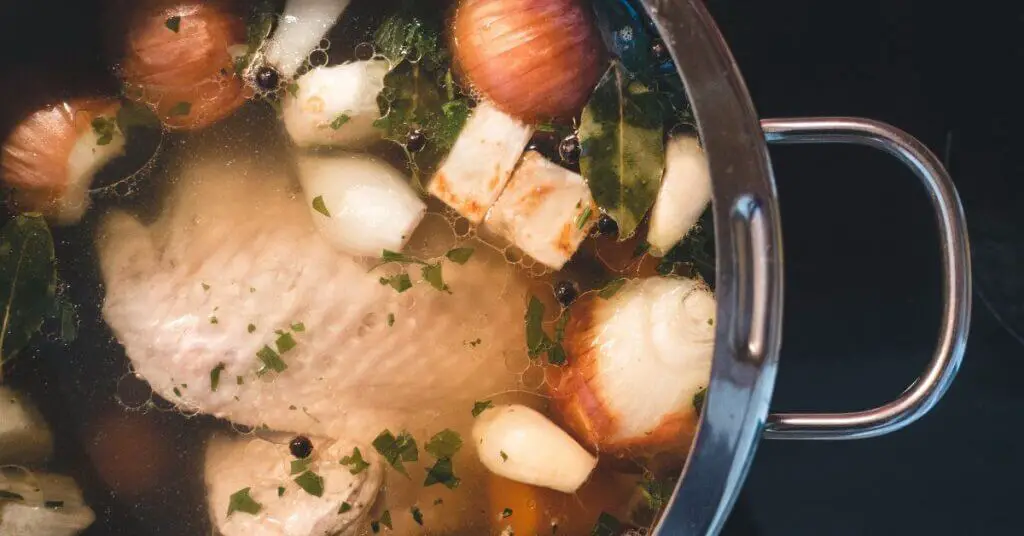ing Boiling frozen chicken is more than just a cooking method; it’s a skill that combines convenience with safety. In today’s fast-paced world, where time is often a luxury, the ability to cook chicken straight from the freezer can be a game-changer for meal preparation. However, this convenience should not come at the cost of safety and quality. Understanding the right techniques for boiling frozen chicken is crucial for ensuring that the meat is not just palatable but also safe to consume. This involves knowing the right temperatures, cooking times, and safety practices as recommended by food safety authorities. In this article, we will explore the ins and outs of boiling frozen chicken, addressing common concerns and providing practical tips to make this process as seamless as possible. Whether you’re a seasoned cook or a beginner in the kitchen, mastering the art of boiling frozen chicken is an essential skill that can simplify your cooking routine while keeping health and safety at the forefront.
Is It Safe to Boil Frozen Chicken?
When it comes to cooking frozen chicken, one of the most pressing questions is its safety. The good news is, boil frozen chicken is not only safe but also endorsed by food safety experts, provided certain guidelines are followed. The United States Department of Agriculture (USDA) confirms that cooking chicken from its frozen state is perfectly safe. However, it’s important to note that the cooking time for frozen chicken is approximately one and a half times longer than for thawed chicken.
The key to safely boiling frozen chicken lies in ensuring that it reaches the right internal temperature. The USDA recommends that chicken, regardless of its part, should be cooked to an internal temperature of 165°F (74°C). This temperature is critical to eliminate potentially harmful bacteria like Salmonella and Campylobacter. Using a meat thermometer is the best way to accurately determine this.
It’s also essential to maintain a consistent simmer in the cooking process. A vigorous boil can lead to uneven cooking, with the exterior being overcooked while the interior remains undercooked. A gentle simmer ensures that heat is distributed evenly, allowing the chicken to cook thoroughly without becoming tough.
In summary, boil frozen chicken is a safe practice when done correctly. By adhering to the USDA guidelines and ensuring the chicken reaches the appropriate internal temperature, you can enjoy the convenience of cooking frozen chicken without compromising on safety.
Benefits of Boiling Frozen Chicken

Boiling frozen chicken offers several notable benefits, particularly in terms of time-saving and nutritional aspects:
- Time Efficiency: One of the most significant advantages of boiling frozen chicken is the time it saves. This method eliminates the need for thawing, which can be quite time-consuming, especially if you forget to take the chicken out of the freezer in advance. By boiling it directly from frozen, you can cut down on preparation time significantly, making it an ideal option for quick, last-minute meals.
- Nutritional Retention: When it comes to cooking methods, boiling is often considered one of the healthier options. This is because boiling can help retain the essential nutrients found in chicken, such as proteins and vitamins. Unlike frying or grilling, which may require additional fats or oils, boiling chicken in water helps in preserving its natural nutrients. Additionally, the gentle cooking process of boiling minimizes the risk of overcooking, which can lead to nutrient loss.
In essence, boiling frozen chicken not only caters to the demands of a fast-paced lifestyle but also aligns with health-conscious cooking practices. It’s a method that combines convenience with nutritional benefits, making it a practical choice for those seeking both efficiency and health in their cooking routines.
Types of Chicken Cuts Suitable for Boiling from Frozen
Boiling frozen chicken is versatile, accommodating various cuts, each with its unique characteristics and cooking requirements. Understanding how each cut behaves when boiled from frozen can help in achieving the best results:
- Chicken Breasts: Known for their lean meat, chicken breasts are a popular choice for boiling. When boiled from frozen, they maintain their tenderness and juiciness, making them ideal for shredding or slicing. They are perfect for salads, sandwiches, or as a protein addition to various dishes. The key is to ensure they don’t overcook, as they can become dry.
- Chicken Thighs: Thighs are richer in flavor and have a higher fat content compared to breasts. This makes them more forgiving and less prone to drying out when boiled from frozen. Chicken thighs are excellent for heartier dishes like stews and curries, where their flavor can really shine through.
- Chicken Wings: Boiling frozen chicken wings is a quick way to prepare them for a variety of recipes. Once boiled, they can be finished in the oven or grill for a crispy texture. They are a great option for appetizers or snacks, easily flavored with sauces or seasonings post-boiling.
Each cut requires attention to cooking times to ensure they are thoroughly cooked. Generally, thicker cuts like thighs may take longer than leaner cuts like breasts. Monitoring the internal temperature is crucial for all types to ensure they reach the safe cooking temperature of 165°F (74°C). By understanding these differences, you can effectively boil various cuts of chicken from frozen, catering to a range of culinary needs.
Step-by-Step Guide to Boil Frozen Chicken

Boiling frozen chicken is a straightforward process, but it requires careful attention to ensure the chicken is cooked safely and deliciously. Here’s a detailed guide:
-
Preparing the Chicken:
- Begin by placing the frozen chicken in a large pot. There’s no need to thaw it first, which is a significant time-saver.
- Fill the pot with enough water to cover the chicken by at least an inch. This ensures even cooking.
-
Boiling Process:
- Bring the water to a gentle boil over medium-high heat. Starting with cold water and gradually heating it helps in cooking the chicken more evenly.
- Once the water starts boiling, reduce the heat to a simmer. A vigorous boil can cause the outer part of the chicken to cook too quickly while leaving the inside undercooked.
- For added flavor, consider seasoning the water. Simple additions like salt, pepper, bay leaves, or garlic can infuse the chicken with extra taste.
- The cooking time will vary depending on the size and cut of the chicken. As a general rule, expect it to take about 1.5 times longer than it would if the chicken were thawed. For example, if chicken breasts usually take 20 minutes to cook when thawed, they will take about 30 minutes from frozen.
-
Checking for Doneness:
- The most reliable way to check if the chicken is done is by using a meat thermometer. The internal temperature should reach 165°F (74°C).
- If you don’t have a thermometer, another method is to check if the juices run clear when you pierce the chicken with a knife. The meat should also be opaque all the way through, and there should be no pink at the bone for cuts with bones.
Following these steps will ensure that your frozen chicken is boiled safely and deliciously, ready to be used in a variety of dishes. Remember, patience is key – rushing the process can lead to unevenly cooked chicken, so allow it enough time to cook thoroughly.
Common Mistakes to Avoid
When boiling frozen chicken, avoiding certain common mistakes can make a significant difference in the outcome of your dish. Here are some key points to keep in mind:
-
Overcooking Concerns:
- One of the biggest mistakes is overcooking the chicken, which can lead to dry, tough meat. This often happens when the chicken is left to boil at high temperatures for too long.
- To prevent overcooking, use a meat thermometer to check the internal temperature, ensuring it reaches but does not significantly exceed 165°F (74°C).
- Remember, the size and cut of the chicken will affect cooking times. Smaller or leaner cuts like breasts cook faster than larger or fattier cuts like thighs.
-
Seasoning Tips:
- Boiling chicken in plain water can result in bland-tasting meat. To enhance the flavor, add seasonings to the water. Salt is essential, but you can also include herbs, garlic, onion, or even a bouillon cube for more complexity.
- Be mindful of the amount of seasoning used. Over-seasoning can overpower the natural flavor of the chicken. It’s better to start with a moderate amount and adjust to taste.
- For an aromatic touch, consider adding vegetables like carrots, celery, or onions to the boiling water. These not only impart flavor but can also be used in the dish or as a base for a broth. Explore various seasoning techniques to enhance the taste.
By avoiding overcooking and seasoning the chicken properly, you can ensure that your boiled chicken is not only safe and nutritious but also flavorful and enjoyable. These simple yet effective tips can elevate the taste and texture of your boiled chicken, making it a delightful addition to various meals.
Tips for Enhancing Flavor and Texture
Enhancing the flavor and texture of boiled frozen chicken can transform it from a bland, emergency option to a delicious component of your meal. Here are some tips to achieve this:
-
Seasoning Techniques:
- Herbs and Spices: Incorporate a variety of herbs and spices into the boiling water. Classic options include bay leaves, thyme, rosemary, and parsley. For a more exotic flavor, try adding spices like paprika, turmeric, or cumin.
- Aromatics: Aromatics like onion, garlic, and celery not only add depth to the flavor but also impart a pleasant aroma. You can also experiment with lemongrass or ginger for an Asian twist.
- Acidic Components: Adding a splash of lemon juice or vinegar to the water can brighten the chicken’s flavor, giving it a subtle tanginess.
-
Simmering vs. Boiling:
- Gentle Simmering: Instead of a rolling boil, maintain a gentle simmer. This slower cooking method allows the flavors to infuse more deeply into the chicken, enhancing its taste and ensuring a more tender texture.
- Even Cooking: Simmering helps in cooking the chicken evenly, preventing the exterior from becoming too tough while the interior remains undercooked.
- Moisture Retention: A simmer is less aggressive than a boil and is more likely to keep the chicken moist and juicy.
By applying these seasoning techniques and opting for a gentle simmer over a hard boil, you can significantly improve the flavor and texture of your boiled frozen chicken. These simple adjustments can make a world of difference, turning a basic ingredient into a flavorful and enjoyable part of your meal.
Using Boiled Frozen Chicken in Recipes
Boiled frozen chicken is incredibly versatile and can be used in a myriad of recipes. Here are some ideas and tips for incorporating it into your meals:
- In Soups:
- Shred the boiled chicken and add it to soups for a hearty and nutritious meal. Chicken noodle soup, chicken vegetable soup, or a creamy chicken and rice soup are classic options.
- For a more exotic touch, add the chicken to a Thai-inspired coconut soup or a spicy Mexican tortilla soup.
- For Salads:
- Slice or shred the chicken and toss it into a salad for a protein-packed meal. A Caesar salad with chicken, a summer chicken salad with fruits and nuts, or a Mediterranean chicken salad with olives and feta are delicious choices.
- Use a light dressing to complement the chicken’s flavor without overpowering it.
- In Sandwiches and Wraps:
- Combine shredded or sliced chicken with sauces like mayo, pesto, or BBQ sauce for a quick and tasty sandwich or wrap filling.
- Add some greens, tomatoes, and cheese for a complete and satisfying meal.
- Shredding and Slicing Tips:
- For shredding, let the chicken cool slightly and then use two forks to pull it apart. This works best with chicken breasts.
- For slicing, use a sharp knife and slice against the grain for more tender pieces. Chicken thighs are great for slicing as they stay moist.
- Other Dishes:
- Use the chicken in pasta dishes, like a chicken Alfredo or a chicken primavera.
- Incorporate it into casseroles or rice dishes for a fulfilling dinner.
Boiled frozen chicken, with its neutral flavor and tender texture, can be a blank canvas for a wide range of culinary creations. Whether you’re looking for a quick weekday meal or something more elaborate, it can easily be adapted to suit your recipe needs.
Storage and Reheating of Boiled Chicken
Proper storage and reheating of boiled chicken are crucial for maintaining its quality and ensuring food safety. Here are some guidelines:
-
Safe Storage Practices:
- Cooling: Allow the boiled chicken to cool down to room temperature before storing. However, avoid leaving it out for more than two hours to prevent bacterial growth.
- Refrigeration: Store the chicken in an airtight container and refrigerate it. Properly stored, boiled chicken can last in the fridge for 3-4 days.
- Freezing: For longer storage, you can freeze the boiled chicken. Wrap it tightly in freezer-safe wrap or place it in a freezer bag. Frozen boiled chicken can last up to 4 months.
-
Reheating Methods:
- Microwave: For a quick option, reheat the chicken in the microwave. Cover it with a microwave-safe lid or wrap to retain moisture. Heat it on medium power to avoid drying it out.
- Stovetop: Reheat the chicken in a skillet over medium heat. Add a bit of water or chicken broth to keep the chicken moist.
- Oven: Preheat the oven to 350°F (175°C) and place the chicken in an oven-safe dish. Add some liquid like broth or water, cover with foil, and heat until the chicken is warmed through.
When reheating, ensure that the chicken reaches an internal temperature of 165°F (74°C) to ensure it is safe to eat. It’s important to note that chicken should only be reheated once after its initial cooking, as multiple reheating cycles can degrade its quality and increase the risk of foodborne illness. By following these storage and reheating practices, you can enjoy your boiled chicken safely and deliciously in subsequent meals.
FAQs
- Can I boil different types of frozen chicken cuts together?
- Yes, you can boil different cuts together. However, keep in mind that various cuts have different cooking times. Thicker cuts like thighs may take longer than thinner cuts like breasts. To ensure even cooking, consider adding the thicker cuts to the pot first and the thinner cuts later.
- How can I tell if the chicken is cooked properly?
- The most reliable method is to use a meat thermometer. The internal temperature should reach 165°F (74°C). If you don’t have a thermometer, check if the juices run clear when you pierce the chicken, and the meat should be opaque all the way through.
- Can I flavor the chicken while it’s boiling?
- Absolutely! Adding herbs, spices, and aromatics like onion, garlic, or celery to the boiling water can greatly enhance the flavor of the chicken. You can also add salt, pepper, or a bouillon cube for a more savory taste.
- Is it better to boil chicken slowly or quickly?
- It’s better to boil chicken slowly at a simmer. This ensures that the chicken cooks evenly and remains tender and juicy. A rapid boil can make the chicken tough and dry.
- Can boiled frozen chicken be used for meal prep?
- Yes, boiled frozen chicken is excellent for meal prep. It can be stored in the refrigerator for 3-4 days or frozen for up to 4 months. This makes it a convenient option for preparing meals in advance.
- What should I do with the leftover water from boiling chicken?
- The leftover water can be used as a chicken broth in soups, stews, or sauces. It’s packed with flavor and nutrients, making it a valuable byproduct of the boiling process.
Conclusion and Final Thoughts
Boil frozen chicken is a convenient and safe method for preparing a quick meal. By following the guidelines and tips provided, you can ensure your chicken is both delicious and safe to eat. Remember to always check the internal temperature and store leftovers properly.
